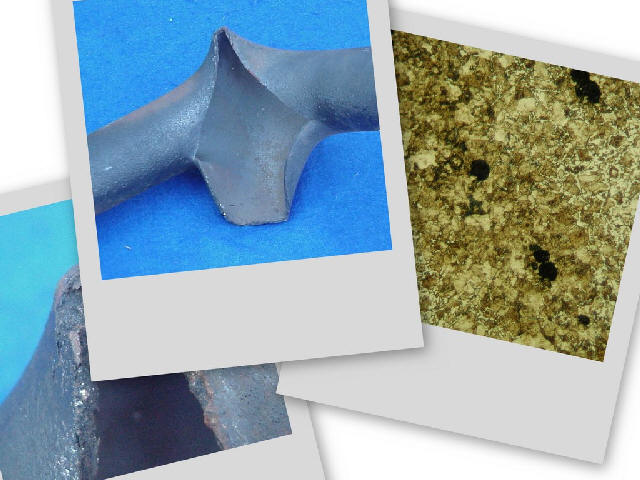|
Graphitization
Graphitization can take place in ferritic steels after exposure
to high temperature for extended time, owing to reversion of the
cementite in the pearlite to the more stable graphite phase. It
is a particular form of microstructural degradation that was
formerly observed relatively frequently in petrochemical
components. With the development of more stable Cr Mo steels, it
is not often seen today, but occurs from time to time both in
petrochemical plant and in steam generators in which the
temperature is high and the material is not entirely stable.

Graphitization of
carbon and carbon-molybdenum steel piping during service at
temperatures above 425 °C (800 °F) has caused numerous failures
in steam power plants and refineries. The graphitization
tendency of carbon and carbon-molybdenum steels is increased
when the aluminum content exceeds about 0.025%. Steels
deoxidized with silicon may also be susceptible to
graphitization. Deoxidation with titanium will usually produce
good resistance to graphitization.
Carbon-molybdenum steels
exhibit greater resistance to graphitization than do carbon
steels.
The degree of embrittlement depends on the distribution, size,
and shape of the graphite. The severity of graphitization is
frequently evaluated by bend testing. If graphitization is
detected in its early stages, the material can often be
rehabilitated by normalizing and tempering just below the lower
critical temperature. Steel that has undergone more severe
graphitization cannot be salvaged in this manner; the defective
region must be cut out and re welded, or the section must be
replaced. Carbon and carbon-molybdenum steels can be rendered
less susceptible to graphitization by tempering just below the
lower critical temperature. |



